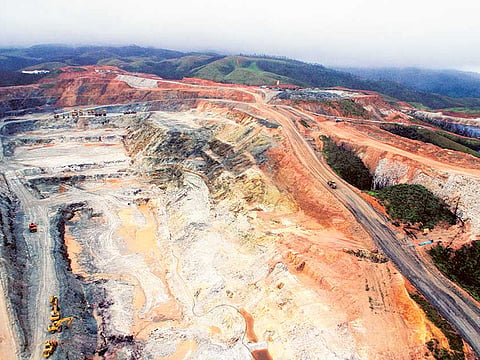From the gold mine to the classroom
Government, NGOs launch programme to bring miners’ children back to school

Manila: Parents who toil in gold mining communities that dot ore-rich parts of the Philippines are being encouraged to moonlight for additional income so that their children do not end up working in dangerous mines like them.
In recent times the government and non-government organisations are assisting their children to stop working dangerously at mining pits, return to school, and get a better education for a brighter future.
About 75,000 young children who work as gold miners across the country have parents who also grew up as gold miners when they were young, according to the labour department which made a profile-study of child-miners from 2014 to 2015.
One out of five households in mining communities has a child working as a gold miner. Parents who grew up as gold miners never encouraged their children to go to school, but allowed them instead to work dangerously as gold miners, according to the Ecumenical Institute for Labour Education and Research, Inc. (Eiler), a European-backed programme aimed at bringing young miners back to schools.
The government and several non-government organisations are intensifying efforts to help Filipino parents and their children in mining communities survive from being socially doomed while working dangerously for high-earning mining companies in many ore-abundant places in the country, said HRW-CR associate director Juliane Kippenberg.
Cycle of poverty
Noting the ironic cycle of poverty at the heart of many gold-mining sites, Kippenberg said, “Children from very poor families who go into the mines to work there have extremely little chance to break out of that cycle of poverty, get proper education, and get a safer, better-paid job. The main cause of this situation is poverty at the house level.”
Eighty-four per cent of households earn below 5,000 pesos (Dh416.66) a month, equivalent to 192.30 pesos (Dh15.69) a day (for 26 days a month) per household of more than five people, according to the Human Rights Watch’s Children’s Rights division which interviewed 135 people, including 65 children aged 9 to 17, in Camarines Norte, southern Luzon and Masbate, central Philippines from 2014 to 2015.
Young miners breathe using small tubes when they go underwater for hours in mining shafts. The mercury they use to refine ore could damage their nervous system and kill them at an early age.
In response, the labour department launched a programme to give livelihood and additional income to miners to stop them from forcing their children to work dangerously at mining pits for little money.
Eiler also launched a back to school rehabilitation programme for young miners, said Eiler’s executive director Anna Leah Escresa.
Out of the 337 Eiler-sponsored students, 20 passed the Alternative Learning System Accreditation and Equivalency Test; and 90 adjusted to formal education after five months. Returning graduates were either enrolled at their real academic level or elevated to vocational schools.
“The young ones who worked as miners for two to six years could hardly adjust to the programme. Their ingrained concern for their parents prevented them from focusing on their studies,” said Escresa.
“A majority of those who were sent to Eiler’s boarding facilities succeeded in studying well. Those who remained with their parents in mining communities were tempted every day to go back to the mining pits.”
The Philippines is a signatory of the International Labour Organisation’s (ILO) campaign for the eradication of child labour worldwide. The global number of children in child labour declined by one-third since 2000, from 246 million to 168 million. More than half of them or 85 million are in hazardous work, down from 171 million in 2000. Asia and the Pacific has the largest numbers, almost 78 million or 9.3 per cent of the child population.
Sign up for the Daily Briefing
Get the latest news and updates straight to your inbox



